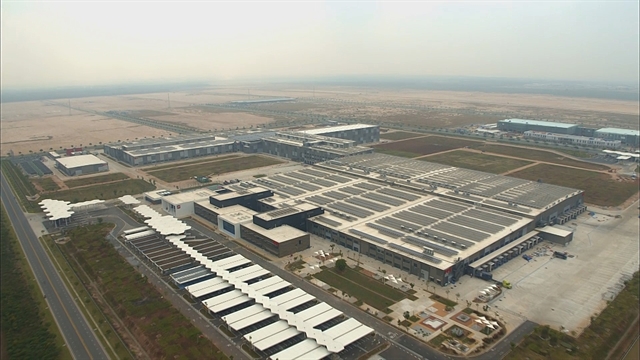 Economy
Economy

 |
| Intelligent chatbots and virtual assistants are at the forefront of AI application in finance and banking (Illustrative image). — Photo courtesy of vietstock.vn |
HCM CITY — The banking and financial sectors are in a transformative period with the rapid adoption of artificial intelligence (AI), but its widespread implementation currently faces several challenges.
Diverse AI applications have already made a mark on the sector, said Dr. Võ Thị Hồng Diễm, lecturer in blockchain enabled business, the Business School, RMIT University.
Intelligent chatbots and virtual assistants are at the forefront, equipped to understand and resolve customer queries, provide tailored financial services, automate tasks, identify fraudulent activities, assess creditworthiness, and deliver automated customer support solutions, she said.
AI's integration into the financial sector has witnessed remarkable growth. A survey by the World Economic Forum in 2020 revealed that 85 per cent of financial organisations were incorporating AI technologies into their operations at the time, while 77 per cent of senior executives anticipated AI to hold high or very high business importance in the subsequent two years.
Diễm said that following the global trend, prominent banks in Việt Nam have invested in researching and implementing AI technologies in their operations.
For instance, TPBank has integrated face recognition technology into its LiveBank automatic banking channel, bolstering security and convenience for customers. VietinBank utilises kiosks with FaceID recognition to identify customers and forward their requests to advisors, as well as serve as valuable assistants.
Other banks such as VietABank, Nam Á Bank, VPBank, Techcombank, VIB, and ACB have embraced AI across various functions, including chatbots for customer support and engagement, asset management, security, fraud prevention, and analysis of peak season ATM withdrawals.
“The incorporation of AI technology in the banking sector not only optimises operational costs but also enhances customer support and enables efficient process automation. AI has proven highly advantageous for revolutionising data management, customer behaviour understanding, and fostering robust customer relationships,” she said.
However, most banks in Việt Nam employ traditional rule-based AI, which excels in handling routine enquiries and assisting with simple financial transactions. This type of AI can only automate tasks that have been programmed into it, and its training is usually tailored for specific stationary tasks, making it less adaptable to new situations or tasks.
In contrast, generative AI possesses the ability to be trained on a wide range of data and can adapt to various situations and changes.
Generative AI stands as a next-generation technology that takes automation to a higher level by empowering computers to generate fresh content and ideas, moving beyond mere data processing and analysis. But its application in the banking sector in Việt Nam remains limited, she said.
She pointed out several challenges that impede its widespread implementation.
First, Việt Nam lacks a solid AI development ecosystem and appropriate support policies, placing it at an early stage compared to some other Asian countries.
Additionally, the high cost of AI and advanced machine learning and the scarcity of skilled labour hinder progress in the field. Currently, the supply of AI personnel in Việt Nam only meets 10 per cent of the domestic market's recruitment demand.
“Moreover, generative AI's reliance on substantial amounts of high-quality data poses a significant obstacle, as data completeness, consistency, and accuracy impact model reliability and transparency. Strict data privacy and security regulations limit the data volume used for training generative AI models, making them susceptible to cyber-attacks and limiting their full potential. Inaccuracies or biases in training data can be amplified by generative AI models, leading to suboptimal outcomes,” she said.
Layered infrastructure poses another challenge for generative AI, since generative AI heavily relies on databases. However, bank data and confidential information are often subject to limited access, making it impossible for AI to perform payment tasks related to customer information and confidential information.
“For greater AI integration in the future, the development of large and high-quality data becomes essential in the banking industry,” she said.
To facilitate complex tasks related to customer information, security, and seamless financial transactions, it is imperative to continue researching and developing unified AI infrastructure solutions.
“Furthermore, Việt Nam's AI development ecosystem and supportive policies still need substantial growth to catch up with other countries in Asia. Strategic investments in technology infrastructure, resources, and talent, including data scientists and machine learning experts, are critical for banks to retain competitiveness and stay prepared for emerging trends,” she added. — VNS




